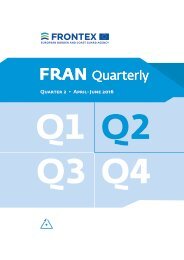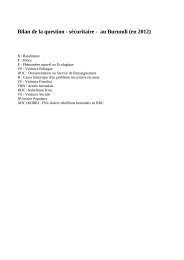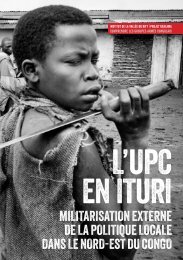Create successful ePaper yourself
Turn your PDF publications into a flip-book with our unique Google optimized e-Paper software.
MATTHEW LEVITT<br />
EVOLVING PERCEPTION OF IS PROVINCES<br />
The problem of IS provinces has quickly evolved over the past eighteen months<br />
or so, along with our perception of the threat. In February 2015, Lt. Gen. Vincent<br />
R. Stewart, the director of the Defense Intelligence Agency, said in an<br />
assessment that the Islamic State was “beginning to assemble a growing international<br />
footprint.” 1 The following month, the U.S. secretary of defense, Ash<br />
Carter, posited that the American military campaign against IS might extend<br />
to the terrorist group’s affiliates in countries such as Libya and Nigeria. 2<br />
By the summer of 2015, the Obama administration had publicly acknowledged<br />
its deepening concerns over the establishment of IS provinces beyond<br />
the group’s core operations in Syria and Iraq. President Obama noted a<br />
“growing ISIL presence in Libya and attempts to establish footholds across<br />
North Africa, the Middle East, the Caucasus, and Southeast Asia” and<br />
pledged to “work day and night with allies and partners to disrupt terrorist<br />
networks and thwart attacks, and to smother nascent ISIL cells that may be<br />
trying to develop in other parts of the world.” 3<br />
The preoccupation of Western states with IS provinces deepened toward the<br />
end of 2015. In September, the U.S. State Department designated IS Caucasus<br />
a Foreign Terrorist Organization. In November, British prime minister David<br />
Cameron declared that IS “poses a significant threat to the stability of the<br />
region,” and its “offshoots and affiliates are spreading instability and conflict”<br />
beyond the Levant. 4 In late November, Western intelligence agencies warned<br />
that, in the face of setbacks in Iraq and Syria, the Islamic State might use the<br />
Libyan province as a new base for jihad—part of its “contingency planning.” 5<br />
The new year brought increasingly distressed rhetoric from the international<br />
community. In January 2016, UN secretary-general Ban Ki-moon cautioned<br />
that IS posed “an unprecedented threat” because of its ability to persuade other<br />
groups around the world to join its cause. According to the secretary-general,<br />
“The recent expansion of the [ISIL] sphere of influence across west and north<br />
Africa, the Middle East and south and southeast Asia demonstrates the speed<br />
and scale at which the gravity of the threat has evolved in just 18 months.” 6<br />
Later that same month, the U.S. State Department designated IS Khorasan as<br />
a Foreign Terrorist Organization (FTO). In February, Secretary of State John<br />
Kerry conceded, “We are still not at the victory that we want to achieve, and<br />
will achieve, in either Syria or Iraq and we have seen Daesh 7 playing a game of<br />
metastasizing out to other countries, particularly Libya.” 8<br />
With this growing concern came heightened determination by the administration<br />
to counter the province phenomenon. Obama assured in April that,<br />
2






